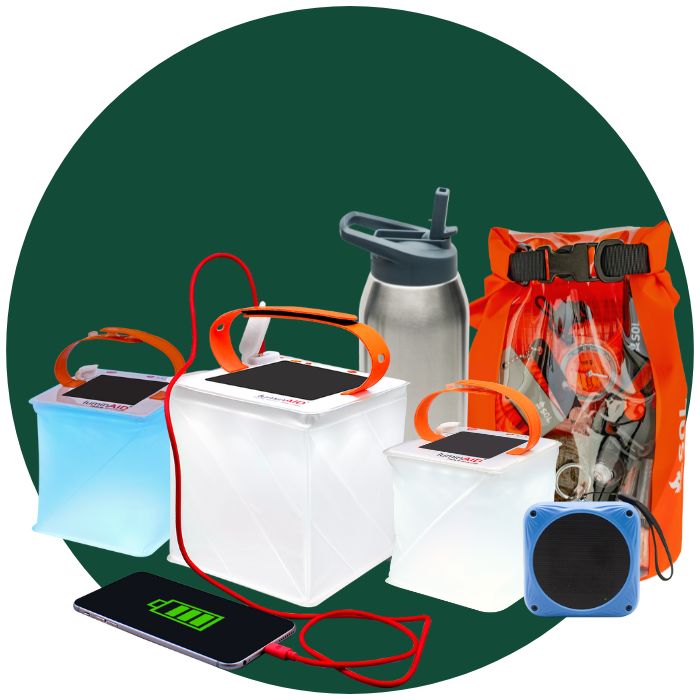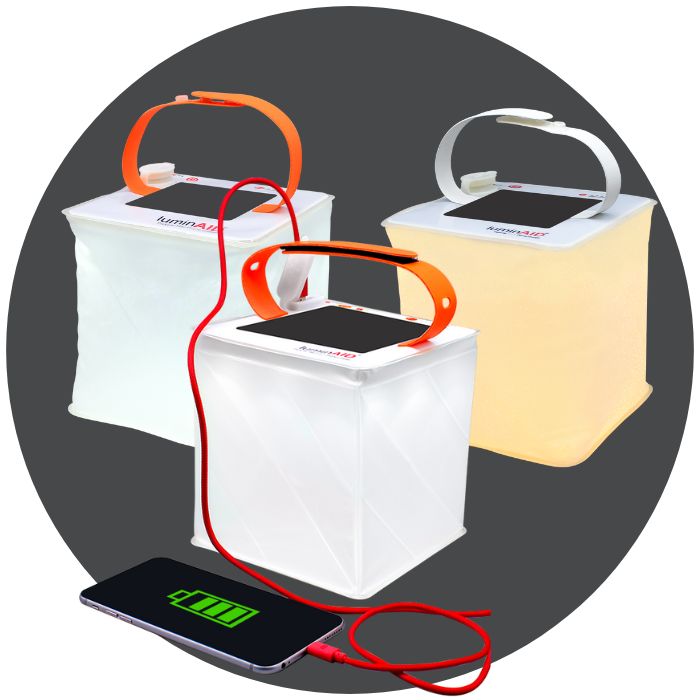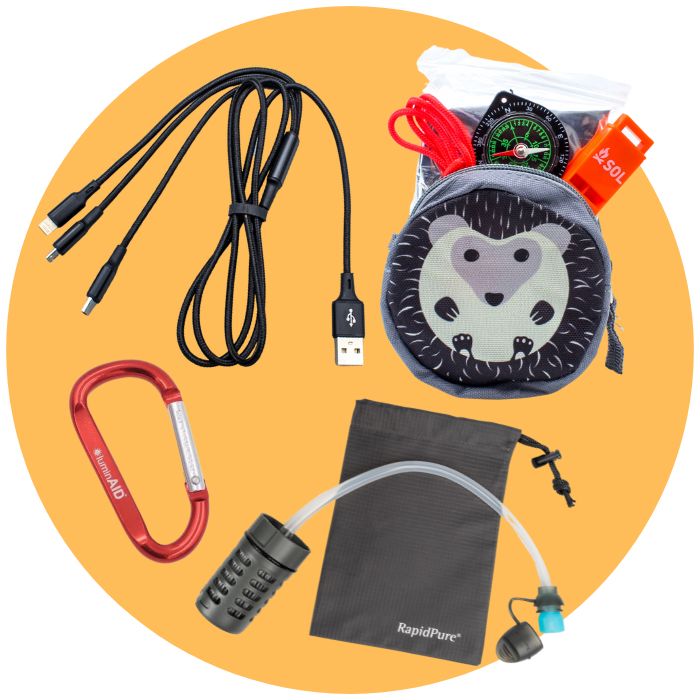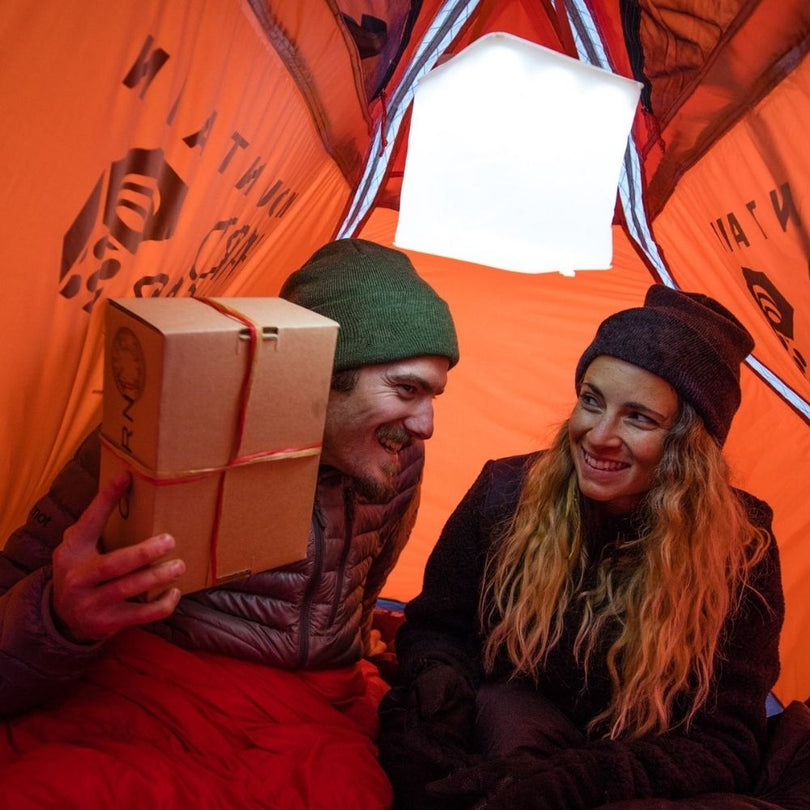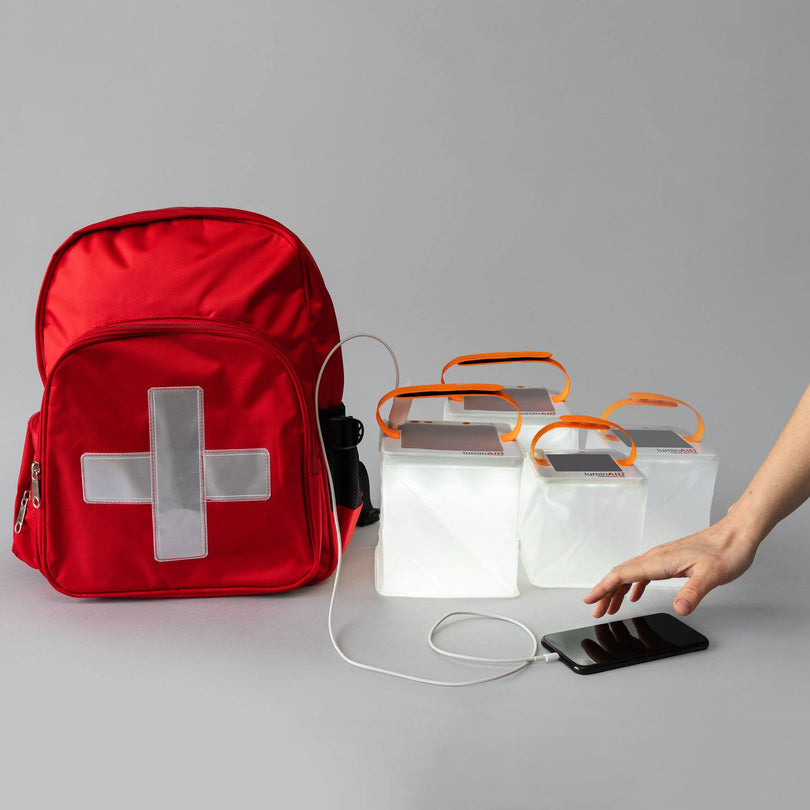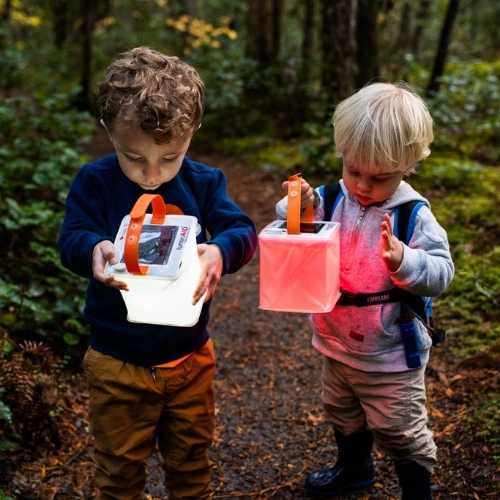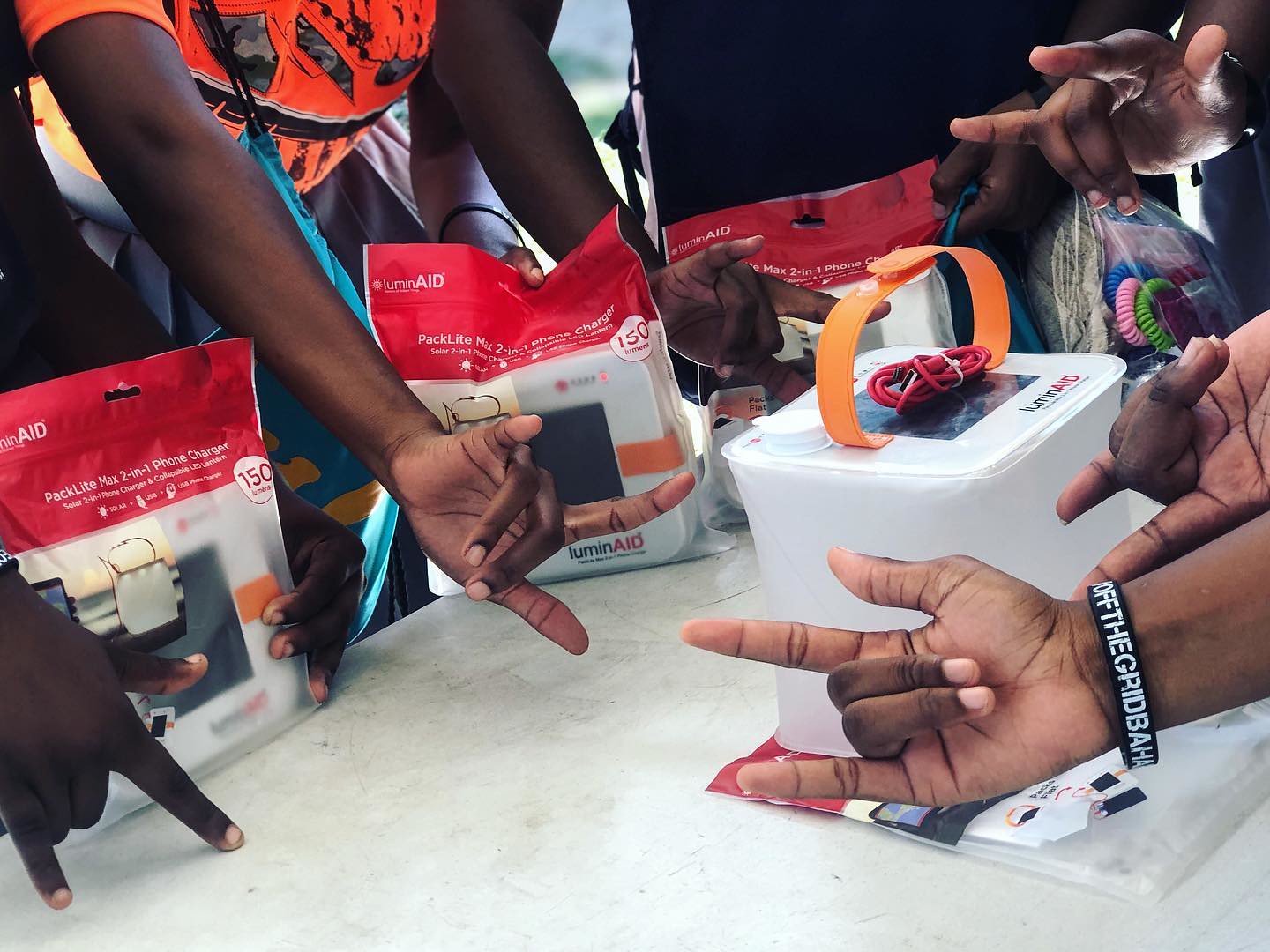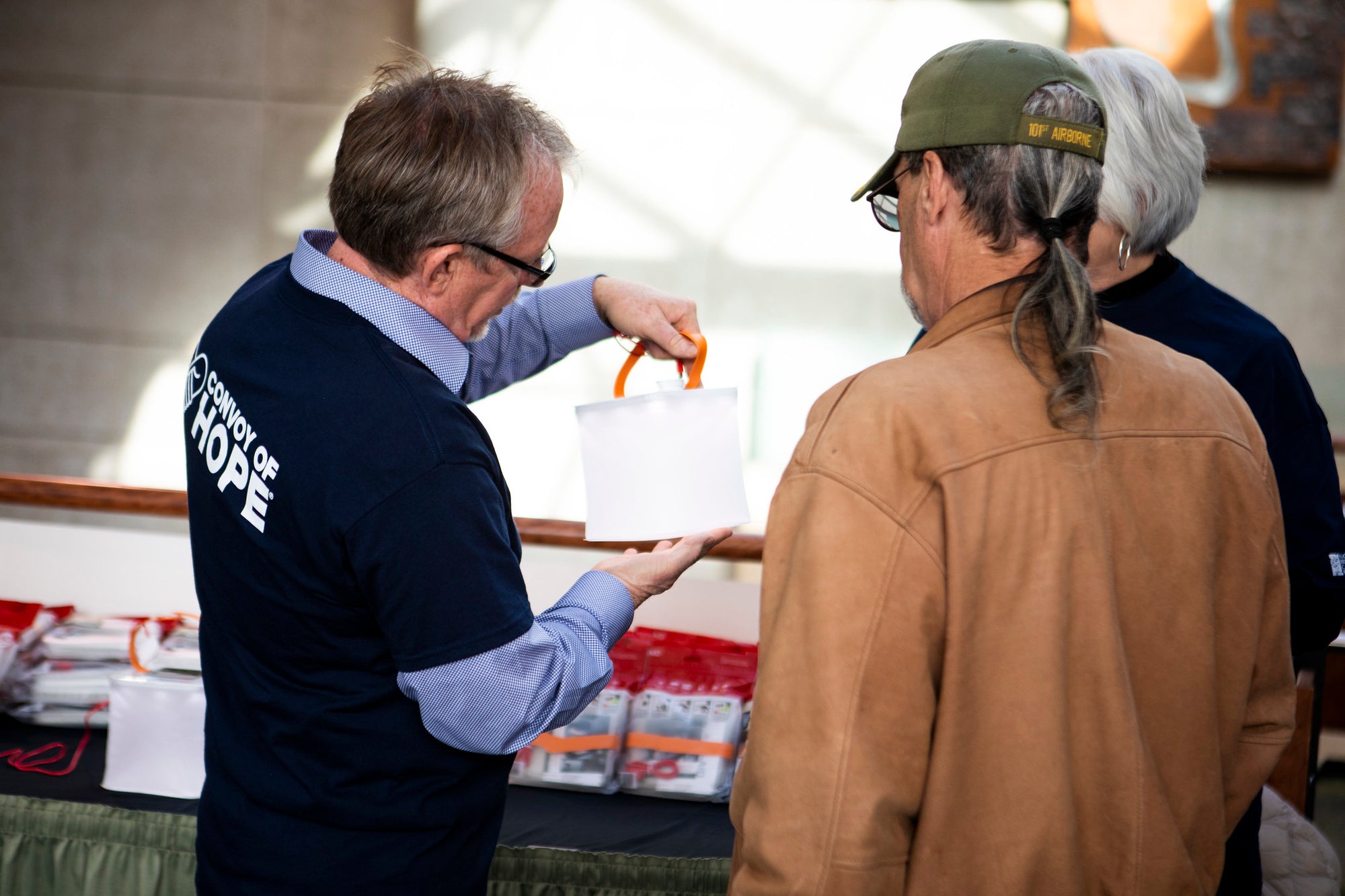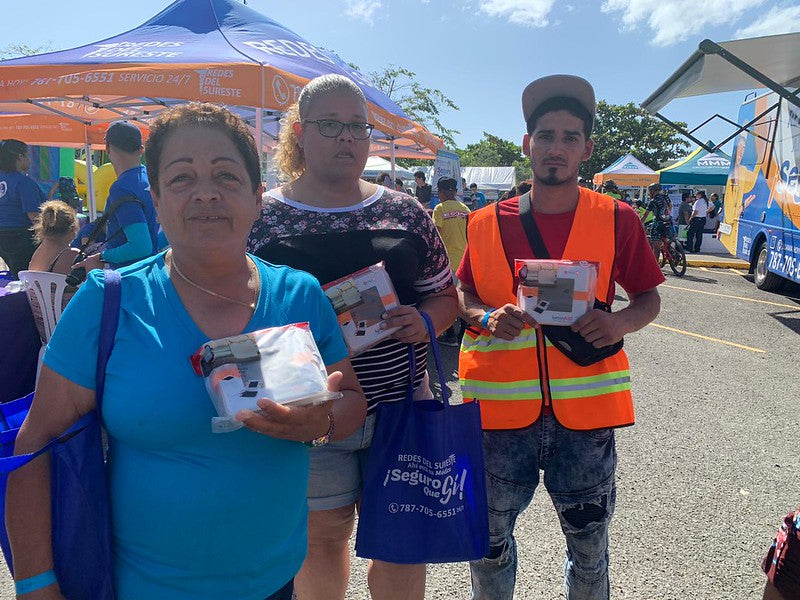In this edition of Notes From the Field, we are lucky to have a guest post from Angela Maria Nardolillo of Off-The-Grid Missions. Off-The-Grid Missions is the only organization in the world dedicated to providing Deaf and Hard-of-Hearing individuals access to life-saving resources in remote, isolated and disaster-stricken regions around the world.
About Off-The-Grid Missions
In 2009, Off-The-Grid Missions was founded by Angela Maria Nardolillo, a hard-of-hearing woman who spent years traveling solo and “off the grid”. During her travels, she witnessed that individuals with significant hearing loss were deprived of language —and this resulted in lack of access to communication, education and overall day-to-day information, making them most susceptible to neglect, abuse, sexual assault, and even murder. Several “close-call” experiences further exposed her to the aftermath of natural disasters, which in-turn revealed a new layer to what it is like for deaf survivors. For example, without electricity, vital information becomes limited to word-of-mouth and loud-speaker, so deaf people do not receive immediate NGO support, which results in being cut-off from life-saving resources. Now, a decade later, the organization has evolved into a global movement that welcomes individuals from the Deaf Community to work towards a common goal: to bring light to the source of the problem in order to disarm it with tangible and sustainable solutions.
466 million people in the world have a significant hearing loss
What many people do not realize is that LIGHT is a basic need for deaf people because they rely on visual forms of communication – such as subtitles and photos, and/or Sign Language.
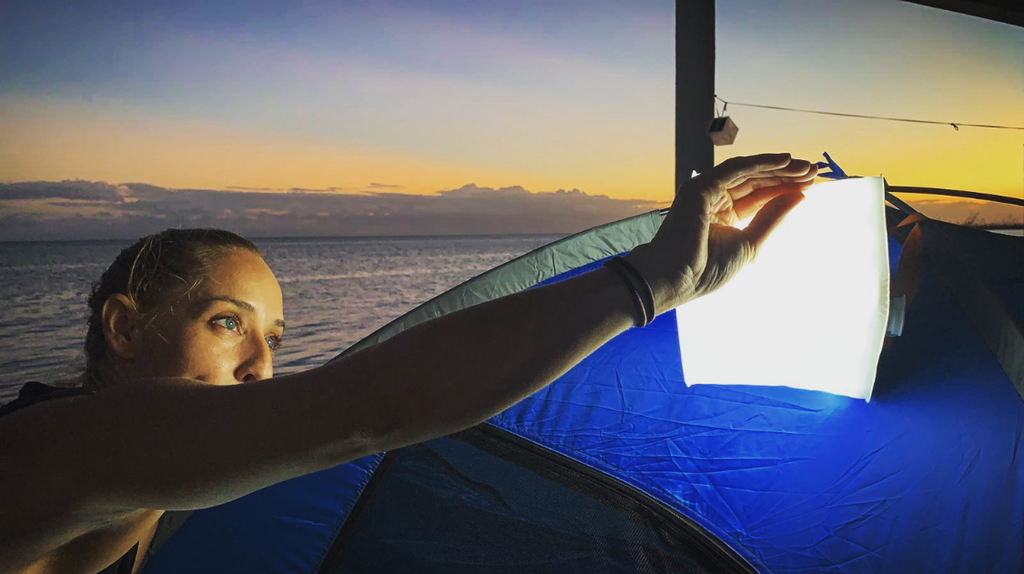
Without light, a deaf person cannot communicate after sundown; and in the aftermath of a natural disaster, it becomes life-threatening.
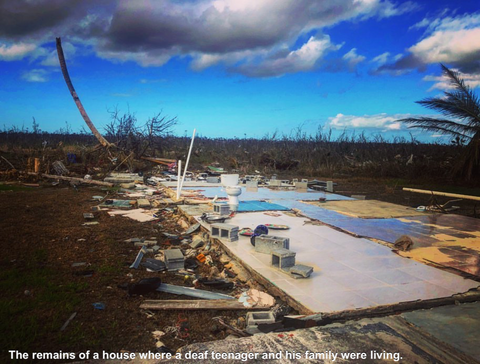 When Hurricane Dorian devastated the Bahamas, the all-women frontlines team set out to locate the Deaf Community in order to supply sustainable relief to the Deaf Community. The mission was called #offthegridBAHAMAS. The organization is 100% volunteer; each team member donating their time and resources. All supplies are donated by partners and online donors with the goal to provide relief for individuals who are Deaf, Hard-of-Hearing, Deaf-Blind and Deaf-Disabled (DHHDBDD). Kids of Deaf Adults (KODAs if under 18 years of age, CODAs 18+) are also included, because like all children, Kodas rely on their parents, so they too are considerably cut-off from receiving access to relief supplies. Three hundred donated LuminAID solar lanterns, clean water filtration systems, rapid hydration product, hygiene kits and sustainable footwear was delivered to Deaf Communities on both Nassau and Grand Bahama islands. These islands also included many of the deaf who have been taking refuge from Abaco which was most destroyed.
When Hurricane Dorian devastated the Bahamas, the all-women frontlines team set out to locate the Deaf Community in order to supply sustainable relief to the Deaf Community. The mission was called #offthegridBAHAMAS. The organization is 100% volunteer; each team member donating their time and resources. All supplies are donated by partners and online donors with the goal to provide relief for individuals who are Deaf, Hard-of-Hearing, Deaf-Blind and Deaf-Disabled (DHHDBDD). Kids of Deaf Adults (KODAs if under 18 years of age, CODAs 18+) are also included, because like all children, Kodas rely on their parents, so they too are considerably cut-off from receiving access to relief supplies. Three hundred donated LuminAID solar lanterns, clean water filtration systems, rapid hydration product, hygiene kits and sustainable footwear was delivered to Deaf Communities on both Nassau and Grand Bahama islands. These islands also included many of the deaf who have been taking refuge from Abaco which was most destroyed.
Upon arrival, the team quickly learned that what was being reported back in the States was nothing compared to what had actually occurred on the ground. The death toll was well into the thousands; victims did not only drown to death, but were crushed by large falling objects such as vehicles due to the heavy winds. They were witnessing funerals day in and day out from victims being flown in to Grand Bahama from Abaco.

Deaf Bahamians, as shown above, were found in the dark, isolated, and without access to food or water. Being in the dark made it extremely difficult for them to communicate with one another, including their young children.
 Unlike other NGOs who have the ability to respond immediately in order to help a general population, finding where deaf people are located when all communications are shutdown, is a difficult challenge. The team is made up of individuals from the Deaf Community all around the world; each member communicates in their region’s respective Sign Language. They too rely on light, not only to communicate, but to effectively work in Emergency Preparedness and Disaster Relief.
Unlike other NGOs who have the ability to respond immediately in order to help a general population, finding where deaf people are located when all communications are shutdown, is a difficult challenge. The team is made up of individuals from the Deaf Community all around the world; each member communicates in their region’s respective Sign Language. They too rely on light, not only to communicate, but to effectively work in Emergency Preparedness and Disaster Relief.
The team works not only to supply, but to empower deaf people so that they have the tools to thrive as independent members of society. They carefully selected deaf individuals to become leaders, assigning them responsibility for each respective region. From a deaf school to deaf villages, as well as homes where deaf had been displaced – deaf individuals of all backgrounds were taught how to implement the water filtration systems which involve drilling and assembling the filters. Each filter has the capability to provide clean drinking water for up to 100 people per day. They also learned how to maintain them so that the systems would continue to bring clean drinking water for years to come. While the water filtration systems are provided to bring clean drinking water to large groups of people, the LuminAID lanterns were provided to each individual as well to caretakers, teachers and family members living with individuals who are deaf.
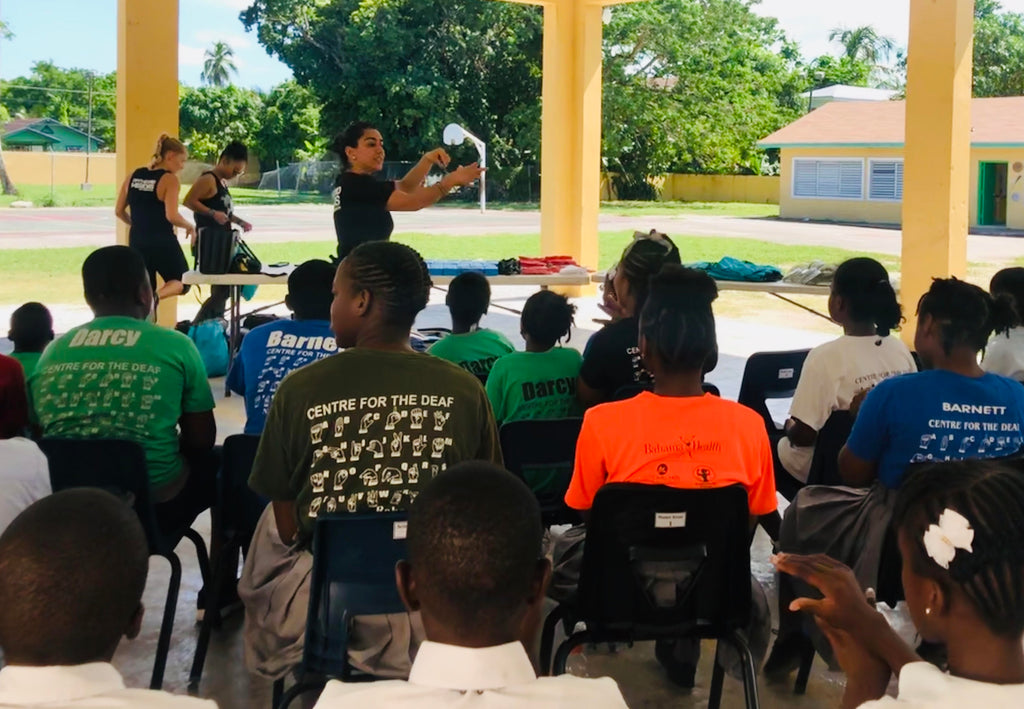
From the team’s experience working in many regions around the world, they will tell you that it is not uncommon to find a deaf person without a language, so being able to adapt to communicate is second-nature to this team. In the Bahamas, the primary mode of communication is English Sign Language (ESL) or Signing Exact English (SEE) which is a result of individuals traveling in from the US/UK and teaching it. These languages are not to be confused with American Sign Language (ASL) or British Sign Language (BSL), and this is only to emphasize how sign language varies per region.
The team found that hanging the LuminAID solar lantern on trees would enable them to keep their hands free for communicating in showing how the lantern works, how to charge it, as well as how to keep it safe. At times, when there were no trees present due to the destruction, team members would take turns holding the light up for one another as they took turns communicating.
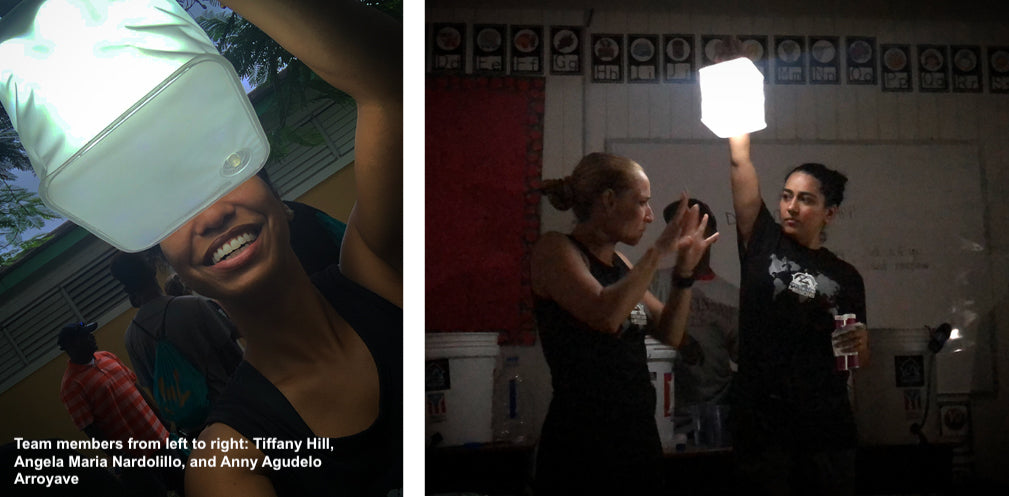
While people who hear may find the durability the LuminAID solar lanterns most appealing – a deaf person relies on each of the lantern’s settings. For example, the bright mode is crucial for visual communication. The dim mode is used mostly by deaf parents who need a softer light while feeding their child or while their child is asleep. The flashing feature is exceptionally unique because while a hearing person would shout to get a person’s attention, a deaf person must either flick a light on-and-off several times; create vibrations in order for sound to carry across a room; or walk-up and tap them on the shoulder. Deaf people rely on the USB port to charge their cell phones in order to receive and send vital information that is limited to those who can hear.
Each feature of the LuminAID solar lantern provides a sense of normalcy for a deaf person that would otherwise be lost when there is no electricity.
Just as the team ended their mission and was departing the Bahamas, they met a Hard-of-Hearing Bahamian woman who happened to be working at the airport and assisted them at their departure gate. As they boarded, she signed to them, “Thank you for coming to the Bahamas.”
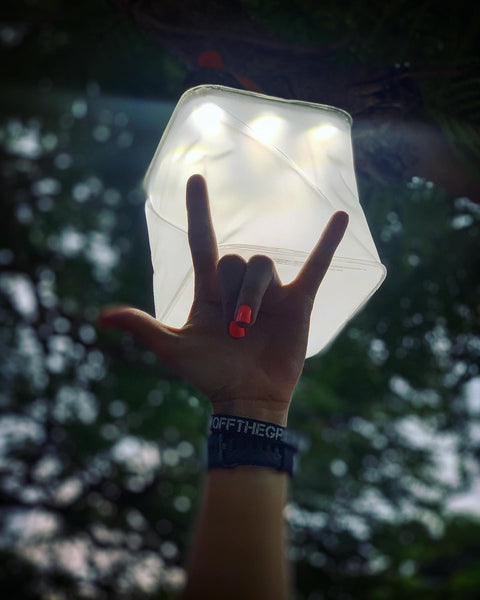
_______________
About LuminAID's Give Light, Get Light Program
1.6 billion people around the world lack proper access to electricity. Many of these people are forced to rely upon dangerous, toxic, and expensive kerosene lanterns as their primary source of light. Through our Give Light, Get Light program, we partner with NGOs and nonprofits all over the world to distribute LuminAID lights to individuals who will greatly benefit from a safe, rechargeable light source. Including lights distributed through Give Light Get Light program, LuminAID has worked with charitable partners to put solar lights and phone chargers on-the-ground in projects in more than 100 countries. In addition to disaster relief aid, LuminAID lights have been used in schools, orphanages, and hospitals in off-grid areas.

